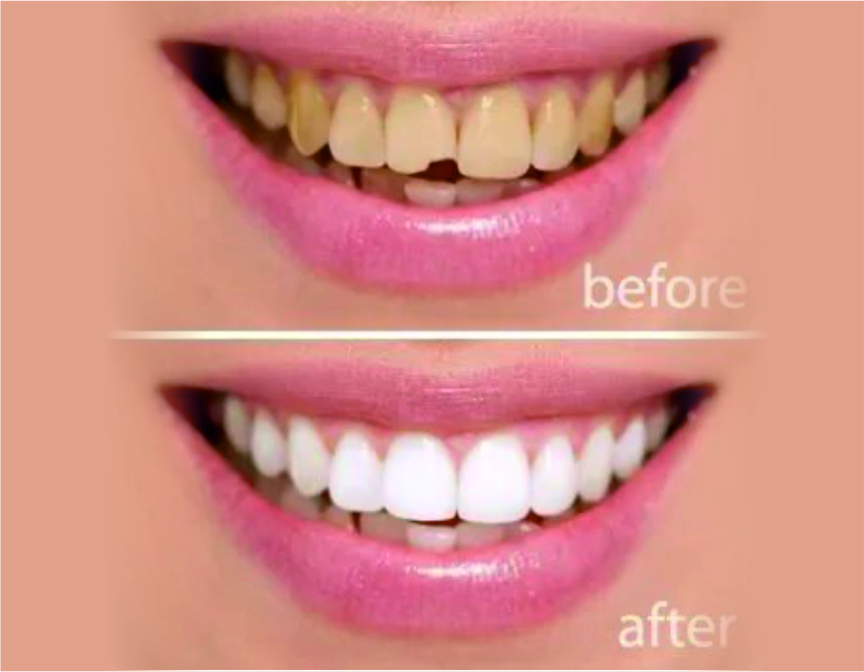Veneers
Veneers
Veneers (sometimes called porcelain veneers) are highly aesthetic custom-made wafer-thin shells that cover the surface of your teeth for a more natural look and feel. This treatment is pain-free and non-invasive. Veneers can be done in as little as two visit. Our patients usually come in for this procedure to enhance the shape, size, position, and color of existing teeth.
We have outlined four areas that make you a good candidate for veneers:
- Stained teeth. If you are a heavy coffee drinker, enjoy your wine Wednesdays, smoke, or eat lots of berries and tomatoes, you may be at risk of losing your pearly whites. Teeth begin to lose density and it’s white color due to aspects of our everyday diets and habits. Due to the porcelain material, veneers do not stain as easily and will match the natural look of white teeth.
- Gaps. To close gaps in the front of your mouth, tooth-colored resin can be applied to close the appearance.
- Crooked teeth. Veneers are an excellent way to restore teeth that are misaligned, uneven, or irregularly shaped (for example, have craters or bulges in them). Teeth with minor damage can be corrected.
- You want to improve your smile. If you have chipped or yellow teeth, getting veneers could be a simple and quick procedure. This type often change the color, length, shape and color of your teeth.
Frequently Asked Questions
What are Veneers?
Dental Veneers are made from porcelain where thin coloured tooth shells are installed to the front end of the teeth to improve your appearance. They are permanently bonded to your teeth. It can be used to cure various cosmetic concerns as well including broken, chipped, smaller than average or discoloured teeth.
On the other hand, No-Prep veneers take much less time to apply and require some tooth alteration, but these alterations are minimal. Instead of removing tooth layers under the enamel, No-prep veneers only affect the enamel.
How Veneers are Done?
The entire process takes 2-3 dental visits. Initially, the process of moulding takes one-two week. Once the veneers are ready, you can schedule your appointment and get them placed. To make sure they are perfect for you, your dentist evaluates the shape, fit, and coloration of the veneers. To attach the veneer to the tooth, dentists use dental cement and then ultraviolet light to quickly harden the cement. And once you are done with this, your new smile is ready to go!
How Painful Is Veneer Treatment?
The whole process of Dental Veneers isn’t painful if done under the influence of local anesthetic with the intention to create numbness over the mouth. While for No-Prep Veneers patients do it without anesthetics.
Steps For Veneer Remedy
1. The first step for the remedy is to consult your dentist, you need to speak your expectations first.
2. During your first visit, the dentist will let you know the shades needed that may look nice on your enamel.
3. Your dentist creates your mold and ships it to the lab. Meanwhile, you could put on temporary veneers.
4. On your second visit, the dentist will attach your veneers and before putting the veneer, a layer of teeth is eliminated out of your enamel.
What To Expect After Veneers?
After your veneers are done, it’s advised not to chew hard objects like ice, pens, or bite your nails as their durability relies upon how much care you take of your enamel. Try not to chew from your front teeth, chew hard foods from your back teeth. Also, while playing sports always wear a mouth guard to protect your Veneers.

